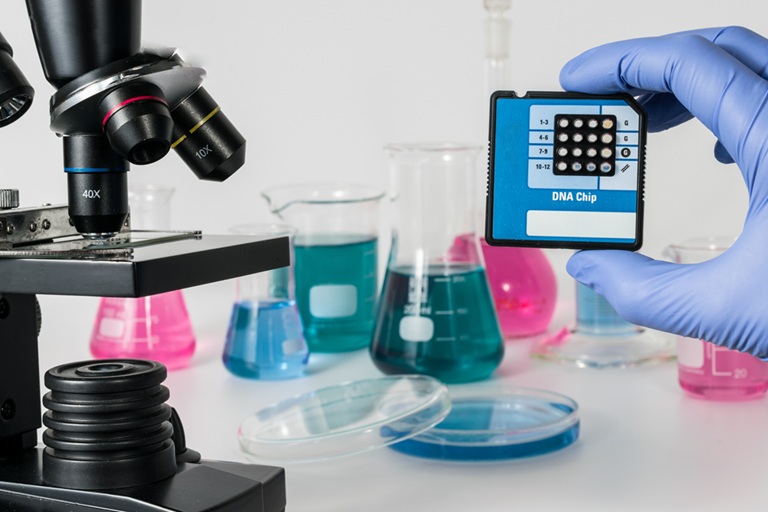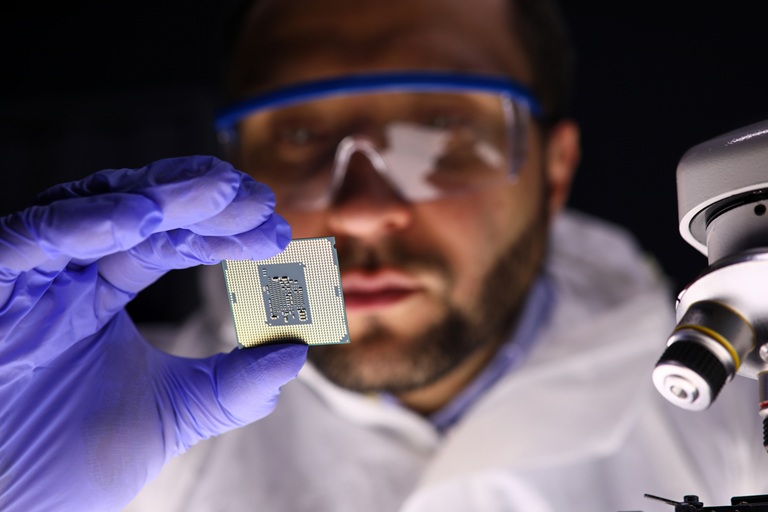Insights & Innovation in Advanced Fluoropolymers
Welcome to the Chromis Blog — your resource for insights into amorphous fluoropolymers, their unique properties, and the technologies they enable.
Here, we share perspectives from our scientists and engineers on:
- Advanced Applications — from semiconductors and digital microfluidics to optics and greenhouse gas mitigation.
- Materials Science Innovation — breakthroughs in polymer chemistry, surface engineering, and scalable manufacturing.
- Industry Impact — how high-performance fluoropolymers are driving progress in clean energy, electronics, medical devices, and more.
Our mission is to make specialized fluoropolymers more accessible, customizable, and impactful across industries. Each post reflects our experience — from Bell Labs origins to developing today’s CyclAFlor® polymers and CyclaSolv® solvents.
Whether you’re an engineer, researcher, or business leader, this blog is designed to spark ideas and provide clarity on how advanced materials can solve real-world challenges.
Start exploring our latest articles below.
November 18, 2025
Refractive index is a subtle material property that quietly shapes how light behaves in optical systems. This introductory article explains what refractive index is, why it matters in optical design, and why unusually low-index materials enable new optical applications.
October 20, 2025
Chromis Technologies has secured a Japanese patent for its advanced amorphous crosslinked fluorinated copolymers — materials designed to enhance gas separation membranes used in natural gas processing, hydrogen purification, and refrigerant recovery. These high-performance polymers offer exceptional durability, chemical resistance, and selectivity, enabling more efficient and reliable membrane-based gas separation systems.
September 22, 2025
Chromis Technologies and the University of Kansas have earned a U.S. patent for a new fluoropolymer-coated membrane that separates azeotropic refrigerant blends. This game-changing innovation enables high-purity HFC-32 recovery, offering a scalable solution to one of the HVAC industry’s toughest environmental challenges.
August 25, 2025
Optical interposers may be the future of chip-to-chip communication, but their success hinges on one overlooked detail — the materials used to build the microscopic waveguides that guide light. Silicon and glass dominate today, yet amorphous fluoropolymers like CYTOP®, Teflon AF™, and next-generation CyclAFlor® could solve persistent challenges in coupling and loss management — making them unlikely but promising contenders in reshaping the future of semiconductor packaging
July 15, 2025
Modern computer systems are running into a traffic jam. Chips like CPUs, GPUs, and accelerators can crunch data faster than ever — but the copper “roads” that connect them are maxing out. The result? Slower performance, rising power use, and more heat. Optical interposers offer a new express lane — tiny light-guiding channels that promise faster, cooler, and more efficient communication between chips. And the materials used to build those channels — silicon, glass, and even advanced polymers like CyclAFlor® — may be just as important as the technology itself.
June 20, 2025
Discover how tiny droplets are revolutionizing lab work. In this fourth and final chapter of our Surface Engineering series, we take digital microfluidics to the next level — on a chip smaller than your credit card. Learn how amorphous fluoropolymers make nanoliter scale experiments possible by altering surface energy for precise, reliable droplet control. From rapid diagnostics and drug discovery to single cell genomics and environmental sensors, see why these unassuming materials are powering the lab on a chip revolution.
May 27, 2025
Curious about how to make droplets dance across a surface? Electrowetting-on-Dielectric (EWOD) is the technology at the core of lab-on-a-chip innovation. In this third post in our Surface Engineering series, we shine a spotlight on amorphous fluoropolymers (AFPs) and their ability to make droplet control fast, reliable, and scalable. From digital microfluidic chips to sleek electrowetting displays and portable environmental sensors, discover how AFPs are powering the next generation of EWOD-based applications.
April 20, 2025
Unlock the full potential of surface engineering with amorphous fluoropolymers —materials that don’t just resist water and oil but let you control how much. In our second article in the Surface Engineering series, discover how AFPs offer a flexible platform to fine tune surface energy and wettability through advanced formulations and coating strategies. Whether you’re innovating in electronics, optics, biomed devices, or next gen photonics, see how the surface properties of AFPs can open up new design possibilities.
March 15, 2025
Kick off your deep dive into advanced surface engineering with amorphous fluoropolymers (AFPs) — materials known for their low surface energy, chemical resistance, and optical clarity. Part 1 explains how AFPs provide consistent, high-performance coatings without the need for surface treatments. It also outlines key properties that make them effective in applications requiring controlled wettability, durability, and processing flexibility. Later posts will explore how AFPs enable precise tuning of surface behavior at the micro and nano scale.
February 24, 2025
This post traces the history of amorphous fluoropolymers — a lineage that begins with the accidental discovery of PTFE in 1938 and leads to the development of Teflon™ AF, CYTOP®, and modern custom variants like CyclAFlor®. You’ll learn how each generation advanced materials performance — from processability and optical clarity to tailored separation and sensing functions — and set the stage for the next wave of advanced materials innovation.
January 31, 2025
This article explores how amorphous fluoropolymers (AFPs) are enabling advanced technology innovations through their unique combination of optical clarity, low surface energy, and chemical resilience. You’ll see how AFPs bring practical advantages — like uniform thin-film coatings, precise control over wettability, and compatibility with scalable manufacturing processes — making them ideal for applications in microfluidics, optics, and high-performance coatings.
December 2, 2024
In today’s fast-paced manufacturing landscape, technical challenges can often push the boundaries of a company’s in-house expertise. For businesses striving to stay competitive, the right partners and resources can make all the difference. Chromis Technologies and the Mississippi Polymer Institute (MPI) are collaborating to deliver specialty polymers innovation and boost regional economic growth in Mississippi.
July 29, 2023
With help from the Mississippi Manufacturers Association Manufacturing Extension Partnership, Chromis Technologies has increased headcount and expanded its R&D and manufacturing footprint at the Mississippi Polymer Institute as it scales up production of CyclAFlor® Amorphous Fluoropolymers.
June 28, 2022
SunHydrogen is working with Chromis Technologies to integrate proton exchange membranes into its nanoparticle-based green hydrogen system. Customized CyclAFlor® amorphous fluoropolymers play a key role in enhancing PEM performance — advancing the development of sustainable, solar-driven hydrogen technology. Read the full press release here.













